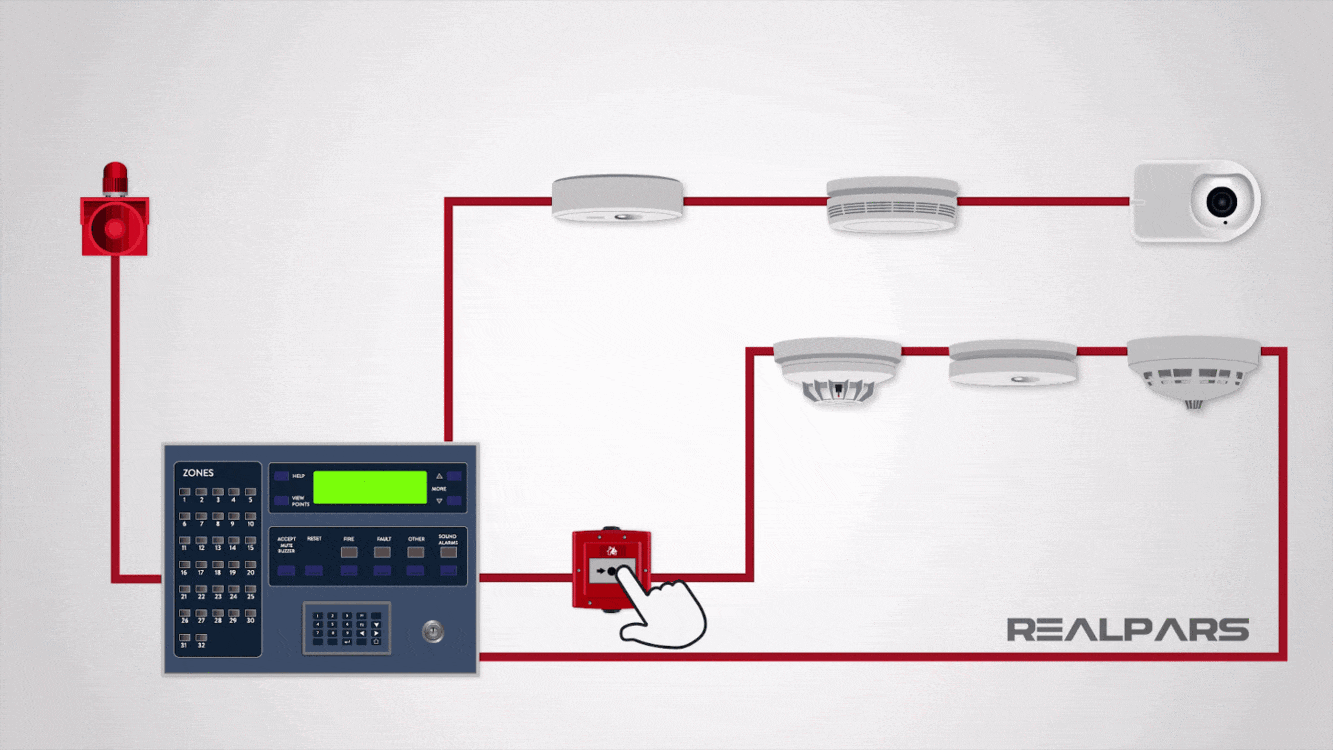At the core of a fire alarm system are the detection devices, from sophisticated intelligent smoke detectors to simple manually operated break glass units, there are a wide array of different types, but we can divide them into groups including:
- Heat detectors
- Smoke detectors
- Carbon Monoxide detectors
- Multi-sensor detectors
- Manual Call Points
1. Heat Detectors
Heat detector can either work on a fixed temperature basis, where it will trigger an alarm if the temperature exceeds a pre-set value or they can work on the rate of change in temperature.
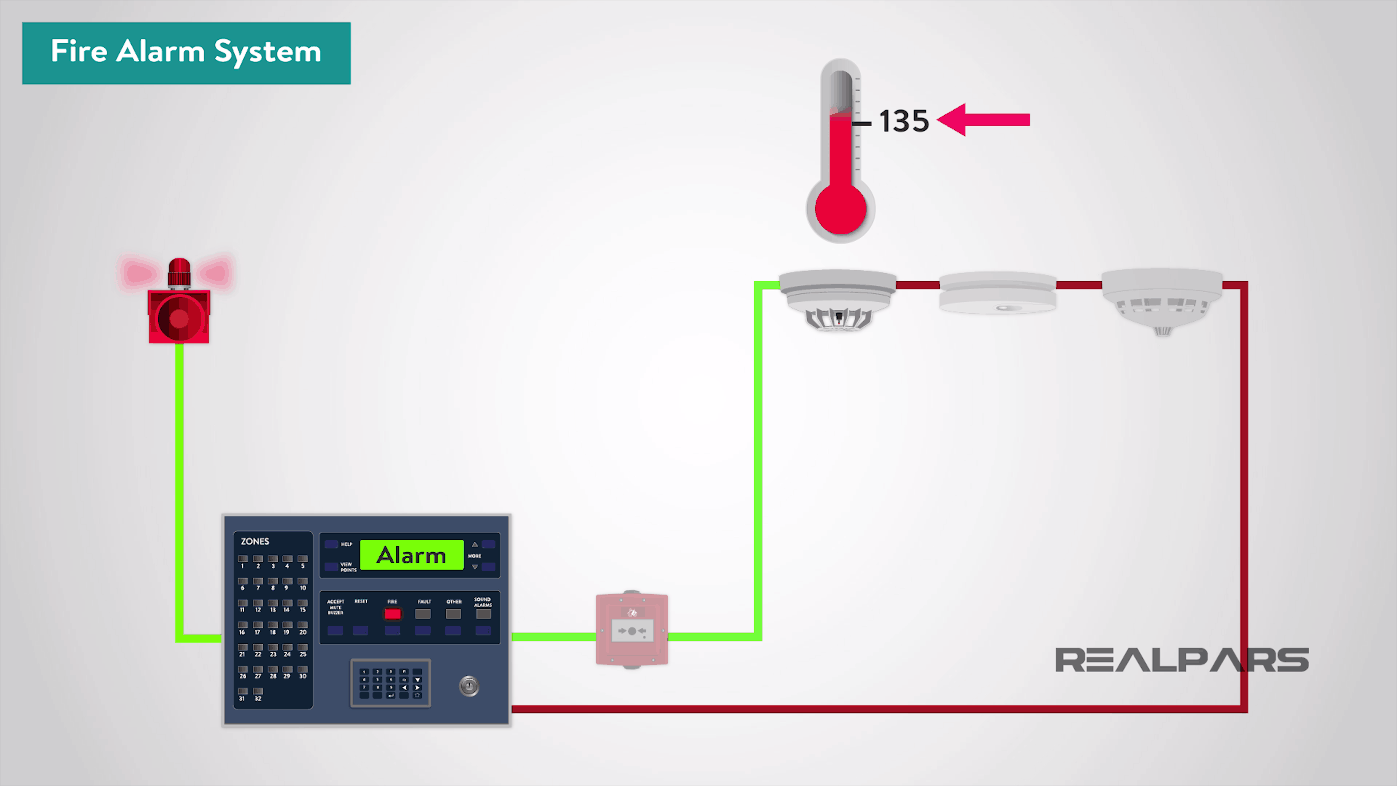
Commonly Heat detectors work in a similar way to an electrical fuse, the detectors contain a eutectic alloy which is heat sensitive when a certain temperature is reached the alloy turns from a solid to a liquid which in turn triggers the alarm.
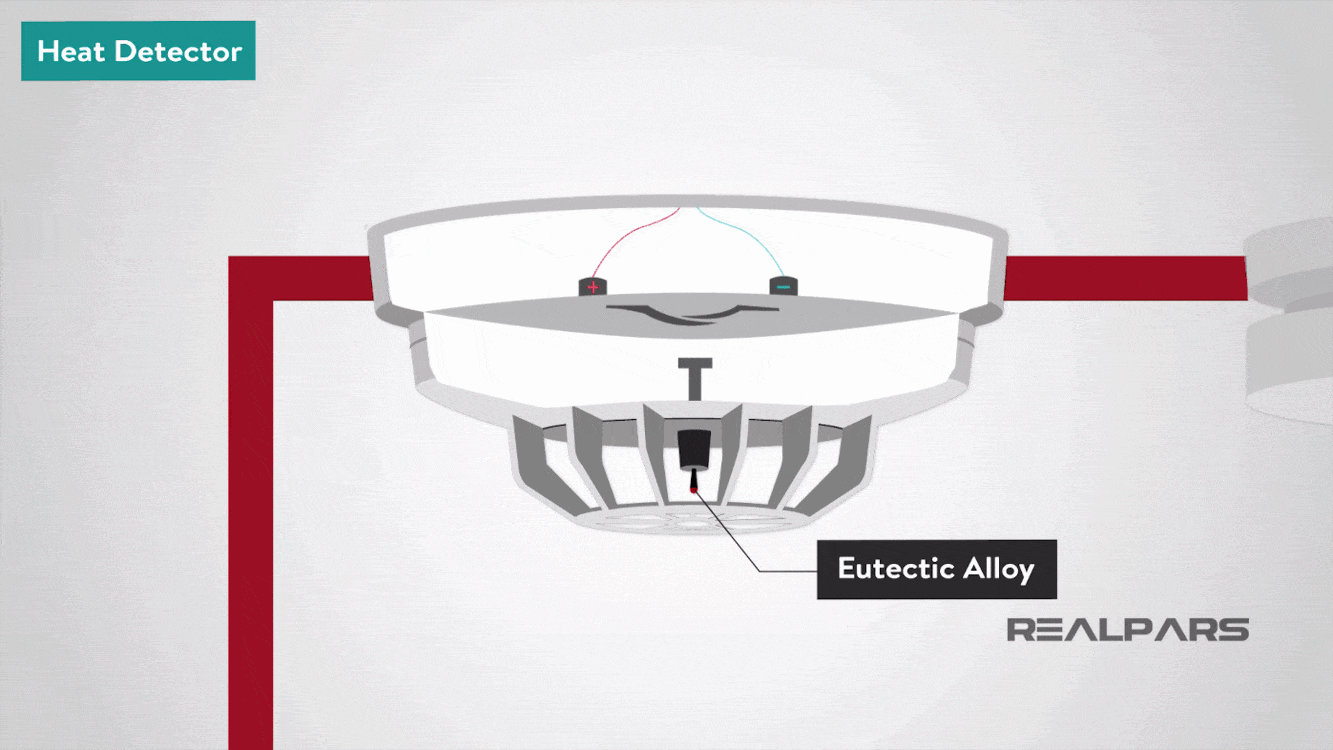
2. Smoke Detectors
There are three basic types of smoke detectors including:
- Ionization
- Light Scattering
- Light Obscuring
2.1. Ionization Smoke Detector
Ionization Smoke detector generally contains two chambers. The first is used as a reference to compensate for changes in ambient temperature, humidity or pressure.
The second chamber contains a radioactive source, usually alpha particle, which ionizes the air passing through the chamber where a current flows between two electrodes.
When smoke enters the chamber the current flow decreases. This drop in current flow is used to initiate an alarm.
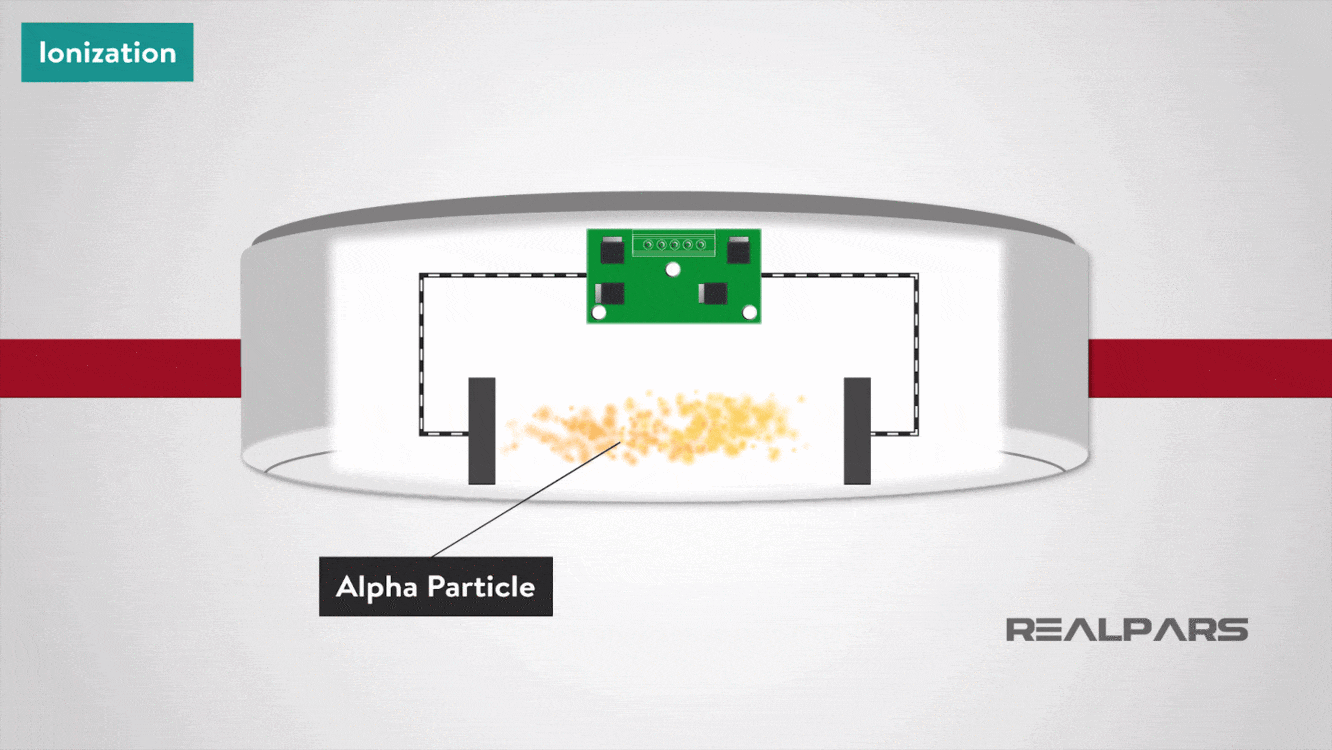
2.2. Light Scattering Smoke Detector
The light scattering smoke detector operates on the Tyndall effect; a photocell and light source are separated from each other by a darkened chamber such that the light source does not fall on the photocell.
The passage of smoke into the chamber causes the light from the source to be scattered and fall on the photocell. The photocell output is being used to initiate an alarm.
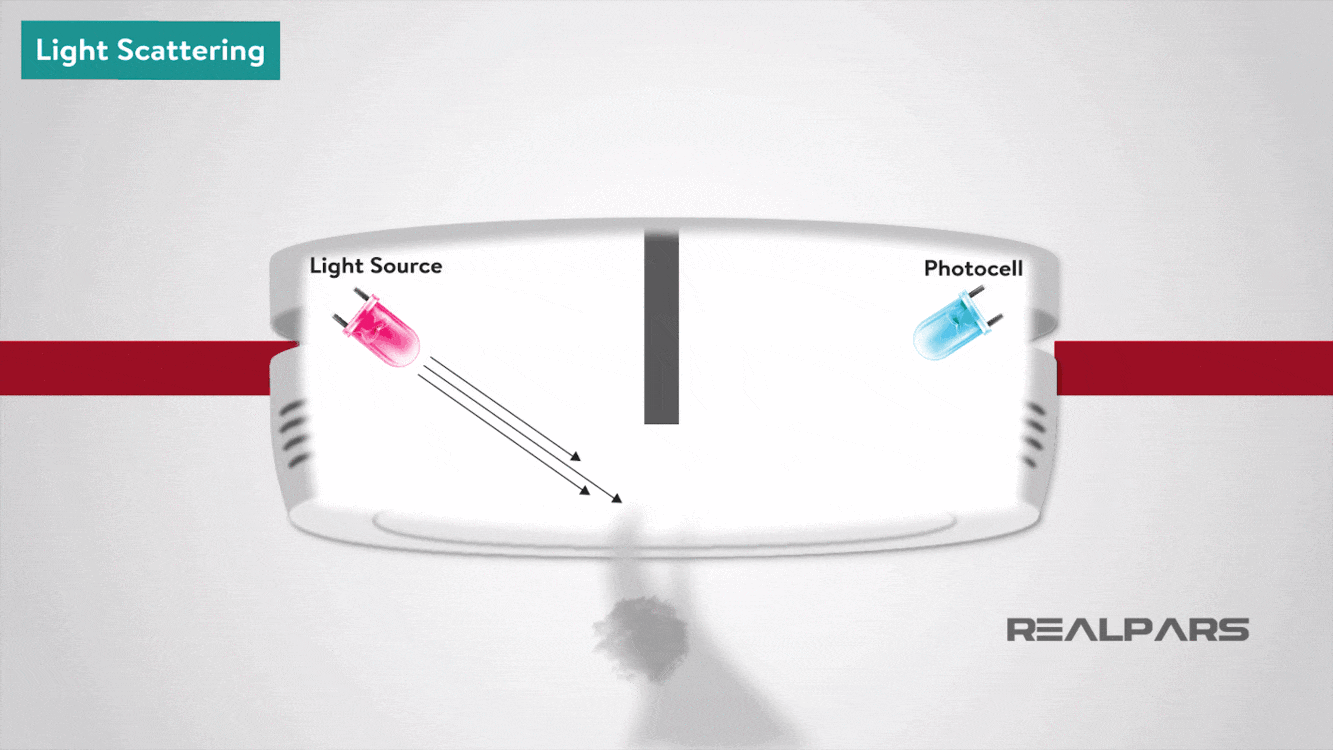
2.3. Light Obscuring Smoke Detector
In the Light obscuring smoke detector, smoke interferes with a light beam between a light source and photocell. The photocell measures the amount of light it receives.
The variation in photocell output, is being used to initiate an alarm.
This type of fire detection equipment can be used to protect large areas with the light source and photocell positioned some distance apart.

3. Carbon Monoxide Detectors
Carbon monoxide detectors are known also as CO fire detectors are electronic detectors used to indicate the outbreak of fire by sensing the level of carbon monoxide in the air.
Carbon monoxide is a poisonous gas produced by combustion.
In this instance, these detectors are not the same as Carbon monoxide detectors used in the home for protecting residents against carbon monoxide produced by incomplete combustion in appliances such as gas fires or boilers.
Carbon Monoxide fire detectors use the same type of sensor as those in the home but are more sensitive and respond more quickly.
Carbon monoxide detectors have an electrochemical cell, which senses carbon monoxide, but not smoke or any other combustion products
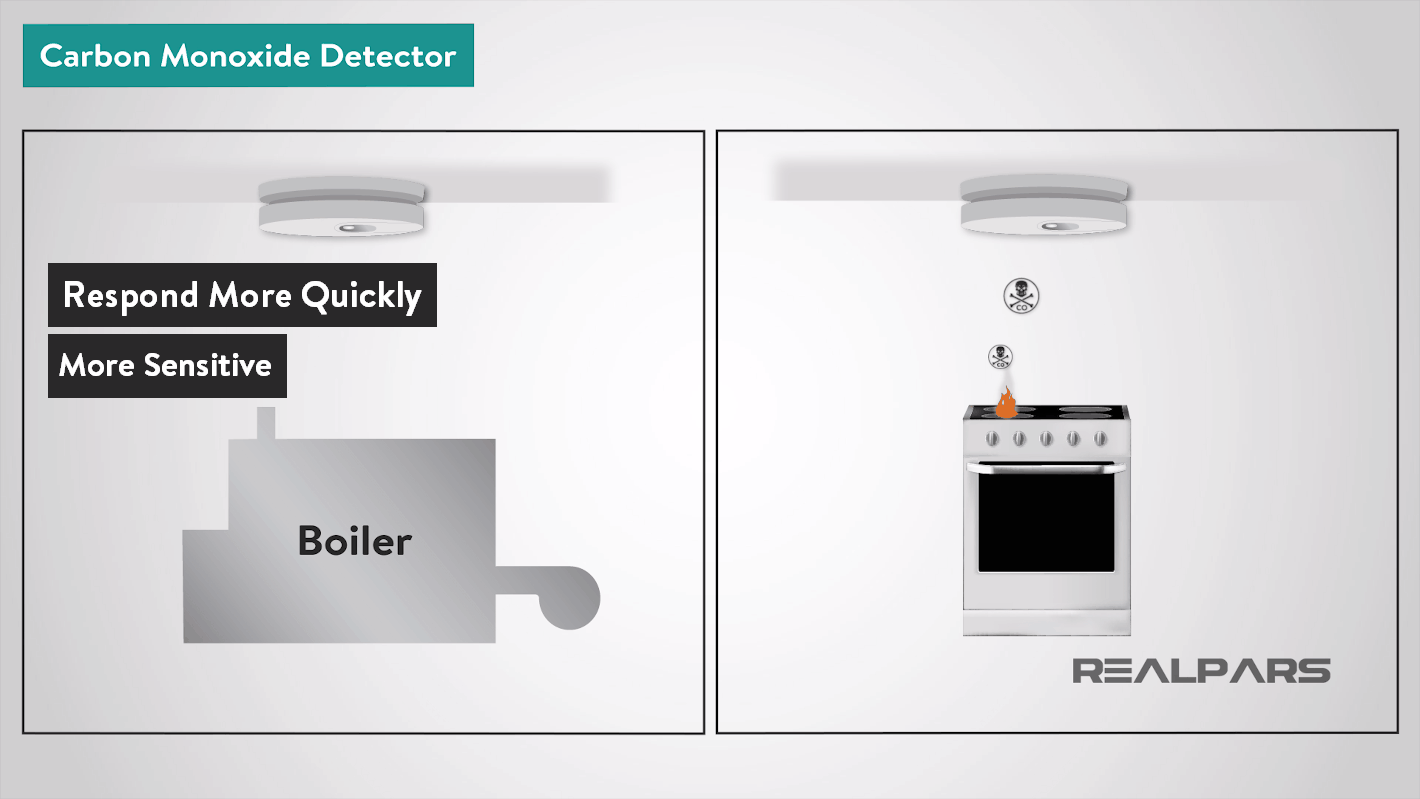
4. Multi-Sensor Detectors
The Multi-sensor detectors combine inputs from both optical and heat sensors and process them using a sophisticated algorithm built into the detector circuitry.
When polled by the control panel the detector returns a value based on the combined responses from both the optical and heat sensors. They are designed to be sensitive to a wide range of fires.

5. Manual Call Points
A Manual Call Point or Break Glass Call Point is a device which enables personnel to raise the alarm by breaking the frangible element on the fascia; this then triggers the alarm.
